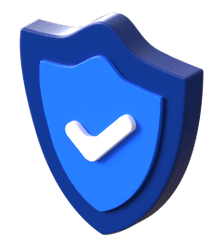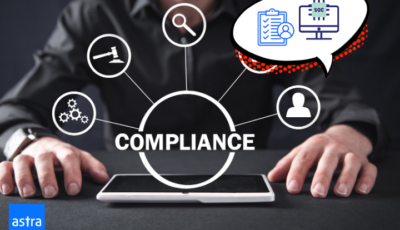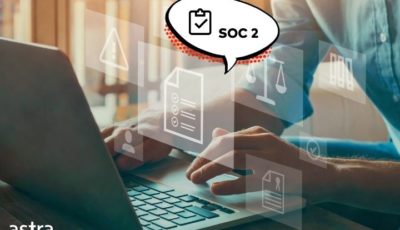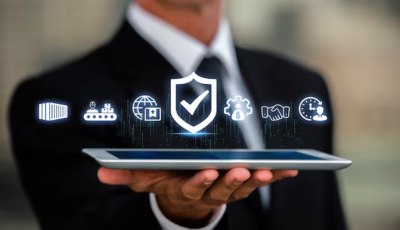With a cyber attack happening every 39 seconds, securing your data and digital infrastructure is the primary priority for every business, organization, and government today. This is where cybersecurity measures like SOC 2 step in.
SOC 2, or Service Organization Control 2, is an internationally acknowledged framework that provides comprehensive guidelines for protecting customer data based on the five “trust service principles.”
A SOC Type 2 report is produced by an external auditor that acts as proof of verification of your company’s adherence to the data security, availability, processing integrity, confidentiality, and privacy standards set by the American Institute of Certified Public Accountants (AICPA).
In this article, we will take a deep dive into the world of SOC 2 and cover definitions, importance, benefits, processes, and components of SOC 2 reports. Let’s get started!
Why is Astra Vulnerability Scanner the Best Scanner?
- Runs 8000+ tests with weekly updated scanner rules
- Scans behind the login page
- Scan results are vetted by security experts to ensure zero false positives
- Integrates with your CI/CD tools to help you establish DevSecOps
- A dynamic vulnerability management dashboard to manage, monitor, assign, and update vulnerabilities from one place.
- Helps you stay compliant with SOC2, ISO27001, PCI-DSS, HIPAA, etc.
- Integrates with Slack and Jira for better workflow management
- Trusted by the brands you trust like Agora, Spicejet, Muthoot, Dream11, etc.

What is a SOC 2 Report?
A SOC 2 report is a comprehensive document outlining a company’s adherence to the SOC 2 cybersecurity framework. It details the effectiveness of the organization’s information security policies and practices.
With coverage of areas like data protection and privacy, the report is crucial for clients and stakeholders, assuring that the company follows stringent standards to safeguard sensitive information and maintain a secure IT environment
Who Needs a SOC 2 Report?
Service Organizations:
Business service providers that access, process, or store sensitive data, use SOC 2 reports to ensure the safety of their clients’ data. Examples include cloud providers such as Azure/AWS; payment processors/processors, and data hosting companies that access client files.
Companies Dealing in Sensitive Data:
Companies handling sensitive information, such as personal, financial, and health records, need a SOC 2 report. This applies to any company collecting, processing, or storing such sensitive data (i.e., banks, healthcare providers, and e-commerce businesses).
Businesses Partnering With Other Enterprises:
Businesses engaging in partnerships or business relationships with other enterprises typically must present them with a SOC 2 report as proof of having adequate controls in place to secure sensitive data, before beginning negotiations.
Companies Required by Regulations:
Organizations operating within certain regulated fields may be required by law or industry standards to secure a SOC 2 compliance report. Healthcare organizations in the US must abide by HIPAA, which mandates specific controls for protecting health information.
Technology Companies:
Tech companies like software developers, IT service providers, and online platforms often require a SOC 2 audit report as they manage substantial volumes of client data that must be managed securely.
What are the Components of a SOC 2 Report?
Five Trust Service Criteria
The SOC 2 report is organized around five Trust Service Criteria (TSCs), which form the core principles for safeguarding its systems and the information processed through them: Security, Availability, Processing Integrity, Confidentiality, and Privacy.
Security involves protecting system resources against unwarranted access; availability refers to access to products or services as per contract/service level agreement; processing integrity is defined as completeness, validity, and accuracy in system processing while confidentiality protects information designated as confidential; finally, privacy refers to safeguarding of personal information collected, retained disclosed by an entity and eventually discarded from them.
Document Requirements for SOC 2 Audit Prep
Prepping for a SOC 2 audit entails gathering and organizing numerous documents such as policies, procedures, and supporting evidence such as system configuration files, access logs, or incident response plans demonstrating control implementation.
Document requirements depend upon your operations and the trust services criteria being assessed. For instance, documents related to data encryption, firewalls, and access controls are necessary for accessing security criteria, while backup plans and system monitoring are mandatory for availability criteria.
Auditors Opinion
This section of a SOC 2 report serves as the independent auditor’s statement regarding the fairness of the presentation of the system, suitability of the design of controls, and operating effectiveness if applicable (Tier II reports only).
An auditor may express one or more opinions during an audit: Unqualified Opinion (clean opinion), Qualified Opinion, Adverse Opinion, or Disclaimer of Opinion. An Unqualified Opinion indicates that controls were designed, implemented, and operating effectively, while any other opinion indicates issues have been identified during the audit that warrant inclusion in its report.
Description of Tests of Controls and Results
This section includes an in-depth explanation of all of the tests carried out by an auditor to test and measure the design and operating effectiveness of controls in place, along with the results of these assessments, especially a SOC 2 Type II report.
Each control tested will be described and its criteria evaluated; procedures performed by the auditor to test it; results from tests; as well as any recommended corrections that might need to be implemented to maintain the effective operation of those controls in place.
What is the Process of Obtaining a SOC 2 Report?
Pre-Assessment Phase
Before initiating their SOC 2 audits, organizations often undergo a pre-assessment phase – performed either internally or by third-party consultants – designed to detect any weaknesses in the organization’s controls that must be addressed before its official audits.
This requires reviewing policies, procedures, and controls against SOC 2 Trust Service Criteria to pinpoint any areas in which the organization does not satisfy a threshold.
Assessment Phase
This phase involves conducting an actual audit by an independent third-party auditor who will assess your organization and controls against SOC 2 Trust Service Criteria, such as reviewing policies and procedures while interviewing relevant personnel to asses whether these controls meet SOC 2 certification requirements.
An auditor will then prepare a draft SOC 2 report, including an in-depth description of your organization’s system, expert opinions from the audit team, and results of tests of controls. Before the final report is released to the organization for finalization review by the auditor, any further clarification or additional information must be submitted before signing off on it as the final document.
Post-Assessment Phase
Following the assessment phase, organizations receive their final SOC 2 report from an auditor, including their opinion and results of testing of controls.
Post-assessment phase activities focus on responding to any recommendations or areas for improvement identified by an auditor, even when an organization receives an unqualified opinion.
Maintenance Phase
Generating a SOC 2 report is not a once-off event for organizations, as organizations need to regularly evaluate and update their controls to meet SOC 2 Trust Service Criteria. This may involve reviewing policies and procedures regularly, as well as performing internal audits and responding to any new risks or threats that arise.
Organizations should also consider periodically obtaining a SOC 2 report – at minimum once annually – to demonstrate assurance to stakeholders of the effectiveness of their controls and demonstrate commitment towards maintaining an efficient control environment.
What are the Benefits of SOC 2 Reports?
SOC 2 reports offer several benefits as listed under:
- Enhanced Data Security: They demonstrate a commitment to robust information protection measures.
- Increased Customer Trust: They help build confidence by showcasing adherence to stringent security standards.
- Compliance with Industry Standards: They help meet regulatory requirements and align with best practices.
- Attracts Clients: They help differentiate businesses as secure and trustworthy service providers.
- Risk Mitigation: They help identify and address potential cybersecurity risks, bolstering overall resilience.
How is SOC 2 Linked to Penetration Testing?
SOC 2 and penetration testing are two complementary processes essential to an organization’s cybersecurity. While SOC 2 primarily examines an organization’s controls against Trust Service Criteria, penetration testing simulates cyberattacks against systems to discover vulnerabilities that attackers might exploit.
But, while SOC 2 certification reassures organizations they have implemented suitable controls for managing customer data, penetration testing provides further assurances that these safeguards effectively block unauthorized entry to systems owned by their organization.
What is the Role of Penetration Testing in SOC 2 Compliance?
Penetration testing plays a vital part in SOC 2 compliance. By identifying vulnerabilities, penetration testing provides one of the best means for measuring how effective security controls implemented are at protecting system resources against unwanted access.
It can also play a vital role in other Trust Service Criteria, such as Availability and Processing Integrity. For example, a pen test can identify vulnerabilities that could allow an attacker to conduct denial-of-service attacks against a system, impacting availability.
Astra Security offers comprehensive SOC 2 penetration testing services designed to help you comply with the industry standards. With a dedicated team of experienced professionals, a proven track record, and a combination of manual and automated pentesting along with round-the-clock support, we help you ace your compliance requirements.
Conclusion
Data breaches and cyberattacks have become all too frequent, making it even more imperative that organizations demonstrate their dedication to cybersecurity. A SOC 2 report provides assurances to stakeholders that an organization has implemented appropriate controls for managing customer data, while penetration testing provides assurances that these controls effectively prevent unauthorized access – both essential components of a holistic cybersecurity approach.
Simply stated, any organization handling sensitive data that wishes to demonstrate commitment to data security should consider obtaining a SOC 2 report and regularly conducting penetration testing as it will both safeguard their information as well as build trust among their stakeholders.
FAQs
What are SOC 1 and SOC 2 reports?
SOC 1 and SOC 2 reports are assessments of an organization’s controls over financial reporting and data security, respectively. SOC 1 focuses on internal controls relevant to financial statements, often for outsourced services. SOC 2 evaluates controls related to security, availability, processing integrity, confidentiality, and privacy for technology services.
How long is a SOC 2 report valid for?
While a SOC 2 report technically doesn’t expire, its validity is recognized for 12 months from the issuance date. Beyond this, the report is deemed “stale” and may not be accepted by potential customers, highlighting the importance of regular assessments to maintain currency and trust in cybersecurity practices.
What are the types of SOC 2 reports?
SOC 2 reports come in two types: Type I assesses the suitability of design at a specific point, while Type II evaluates operational effectiveness over time. Both provide assurance about a company’s control environment, with Type II offering insights into long-term adherence.
What is the purpose of SOC 2 reports?
SOC 2 reports help assess and communicate the effectiveness of a service organization’s information security controls. They are vital for you to demonstrate their commitment to safeguarding sensitive data and building trust with clients.
















